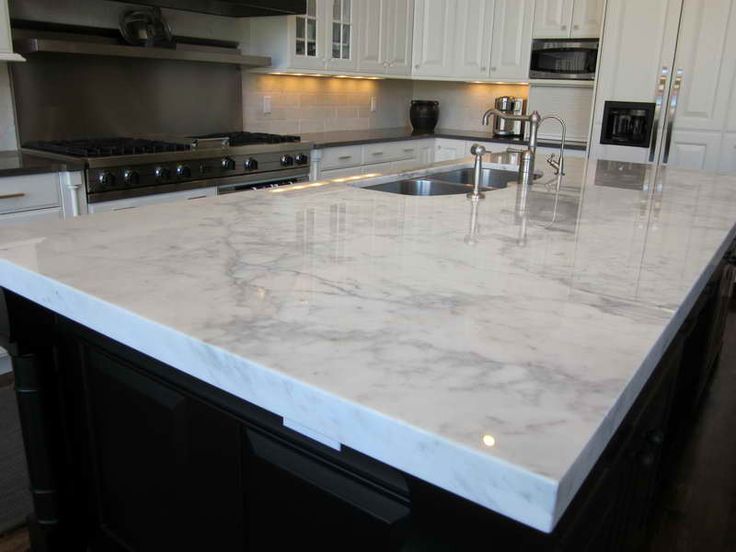 Granite Kitchen Countertops
Granite Kitchen Countertops
Ever wonder how those gigantic dusty stones come out of the earth and are turned into those breathtaking countertops you see in so many kitchens? You’re not alone! Getting granite from the quarry to the top of the kitchen cabinets is a delicate and lengthy process. Knowing what happens to granite along the way only makes you appreciate the final product even more. Read the following for more details on how granite undergoes its impressive metamorphosis.
Granite’s Origins
The original chunks of granite are blasted off of the sides of mountains. Common granite mining places include Brazil and India. These are absolutely massive portions of stone that get shaved off of the mountains. Also, some less common and more costly stones such as blue granite are found beneath the ocean! Despite granite’s durability, it is actually somewhat fragile in its raw state before it has been tempered with a seal and properly installed in your kitchen. These large portions must then be cut into ideal slices for a countertop. These slices are produced using a powerful diamond-bladed saw and can the cutting process can take hours. Slices of stone are kept in order with a numbering system so that granite that matches naturally is grouped together.
Refining the Slabs
Since the cutting process leaves a somewhat smooth but still unrefined and unpolished surface, further work must be done to reach the finished product. CNC machines work away and leave the surface with an eye-catching sheen. These machines are also used to shape the counters edge, whether this means a waterfall, bullnose, or other finish. Polishing can also be done carefully by hand using handheld tools, though this requires a great deal of precision and care. From there a seal is typically used to protect the granite’s pores from collecting dirt, bacteria, and other sorts of stains.
Readying the Granite for Home Use
To ensure that the granite kitchen countertops will fit perfectly in your kitchen, a template needs to be made. This means someone must come to your house to take precise measurements of the counter space. This information is then used to cut the polished granite slabs to fit. They may need to section the granite in such a way and will need to plan out holes for sinks.
Installation
The custom-made slabs are brought to your house and glued to the cabinets. Depending on your layout, you may need support brackets. If there are any seams between two pieces of granite, they are efficiently sealed and polished to the point where the seam is almost unobservable. Supplementary polishing and grinding could also be required depending on how everything fits together.
Those are the fundamentals of how granite is transformed from a giant stone to a thinly cut kitchen countertops. It can be hard to believe that such a sturdy and rough stone can be refined to the point where it looks like a stunning sheet of glass, but that is how natural stone countertops are created. Each and every one is truly a work of art!
- 5 Reasons to Buy Granite Kitchen Countertops
- The Pros and Cons of Marble Kitchen Countertops
- Should You Install Your New Kitchen Countertop by Yourself?
- 9 Reasons to Choose Quartz over Granite for your Kitchen Countertops
- Choosing the Right Kitchen Countertop Material
- Why You Should Buy Engineered Stone Kitchen Countertops
- What You Should Know About Replacing Your Kitchen Counters
- Which Is Better for My Kitchen Countertops: Granite or Quartz?
- Hottest Trends for Kitchen Counter Tops in 2016
- Budgeting for Certain Types of Kitchen Countertops
- Advantages and Drawbacks to a Granite Kitchen Countertop
- Modernizing Your Kitchen with New Countertops
- What You Gain from Investing in Kitchen Countertops
- The Creation Process: How Granite Kitchen Countertops Are Made
- Guidelines to Follow When Maintaining Your Kitchen Countertop
- 6 Things to Consider When Shopping for Kitchen Countertops
- A Look at Some Rare and Exotic Kitchen Countertops

